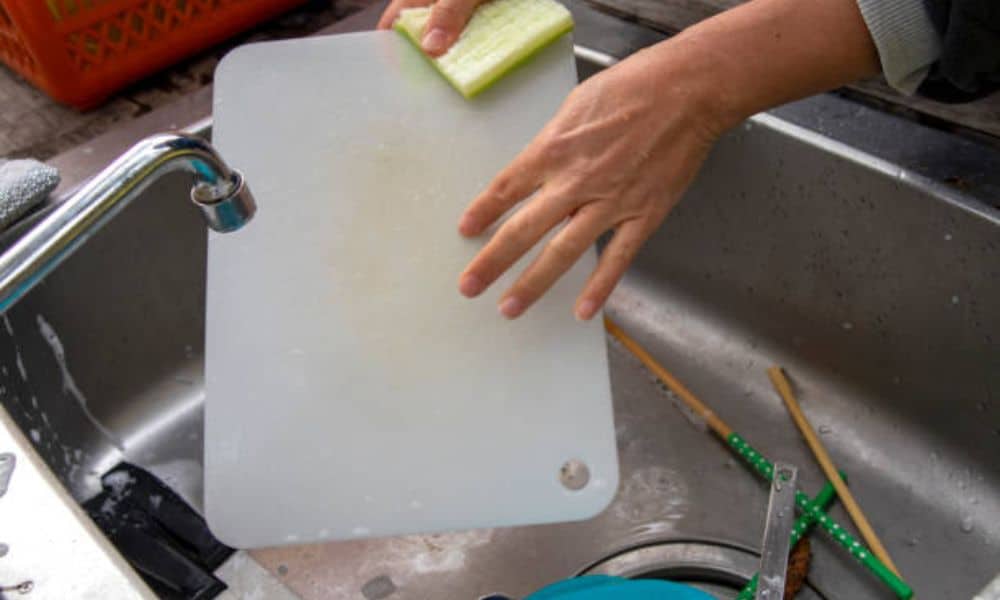I still remember my first plastic cutting board. It was white, smooth, and cheaper than a sandwich. I bought it during my first year living alone. My kitchen had one knife, one pan, and that board. It saw every meal—onions, tomatoes, garlic. But the bright color didn’t last. Soon, orange streaks from carrots appeared. Then yellow smears from turmeric. Worst of all, brown stains from meat juices. Scrubbing didn’t help. I even hid it from guests. Now, I know how to remove stains from a plastic cutting board with simple kitchen items. I’ll show you the steps. And later, how I get perfect rice every time.
Why Plastic Cutting Boards Stain
Plastic is great because it’s light, cheap, and dishwasher-safe. But it has a downside—it holds stains. Every cut creates tiny grooves. Those grooves catch bits of food and absorb colors, especially from strong spices or sauces. Add moisture, and soon your board becomes a breeding ground for bacteria. That’s not just ugly—it’s unsafe too. So, regular cleaning isn’t enough. You need a deeper clean. But don’t worry. I’ve got you.
What You’ll Need
Let’s keep it simple. Here’s what I use:
- Baking soda
- White vinegar
- Dish soap
- Lemon (optional, but nice)
- A sponge or old toothbrush
- Hot water
- Hydrogen peroxide (3%)
You probably have most of these already.
Step-by-Step: How to Remove Stains from a Plastic Cutting Board
Step 1: Start with a Rinse
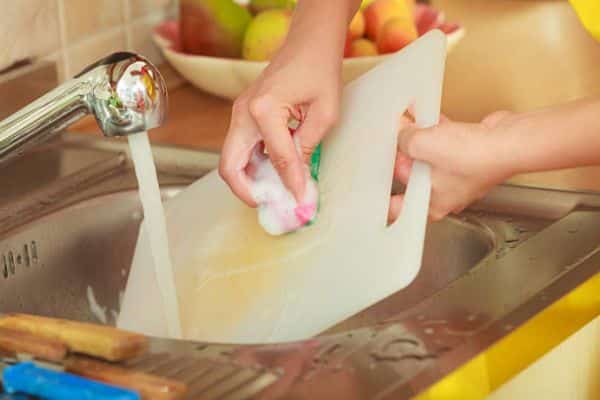
Hold your board under hot running water. Use dish soap and a sponge to clean off any grease or food bits. This clears the surface so the stain removal works better.
I like to use the rough side of my sponge here. It gives the board a gentle scrub.
Step 2: Make a Baking Soda Paste
In a small bowl, mix baking soda with a little water. You’re aiming for a thick paste—not too watery. Spread this paste all over the stained areas of your board.
Let it sit for 5 to 10 minutes. This gives the baking soda time to lift stains. If you’re cleaning after a big cook—like slicing meat on the best cutting board for brisket—this step makes a big difference.
Step 3: Scrub the Paste In
Take your toothbrush (not your current one!) and scrub the baking soda into the board. Use small circles. The soda works as a gentle abrasive, breaking down color stuck inside the grooves.
Don’t rush this. Put on some music. It’s oddly satisfying to see the grime come off.
Step 4: Add Vinegar for a Boost
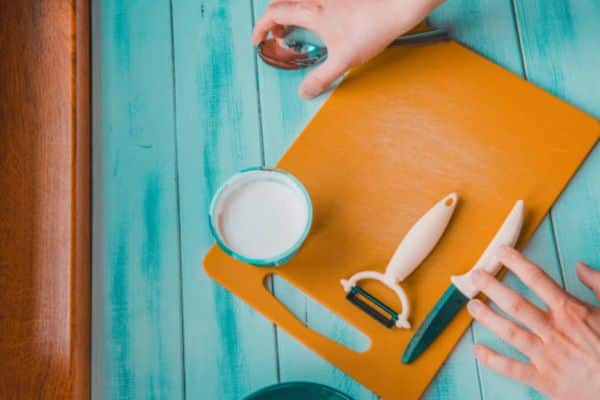
Now pour a little white vinegar over the board. You’ll hear it fizz. That’s good—it means the cleaning is working. The bubbles help pull dirt out of the plastic.
Let it fizz for 3–5 minutes. Then rinse it off with hot water.
Step 5: For Tough Stains, Try Hydrogen Peroxide
If the board still looks stained, don’t give up.
Pour hydrogen peroxide (3%) over the whole surface. Spread it around with your sponge. Let it sit for 15 minutes in a well-lit spot. Light helps the peroxide break down stains faster.
After that, rinse it well and wash it again with soap.
Step 6: Sun-Dry It
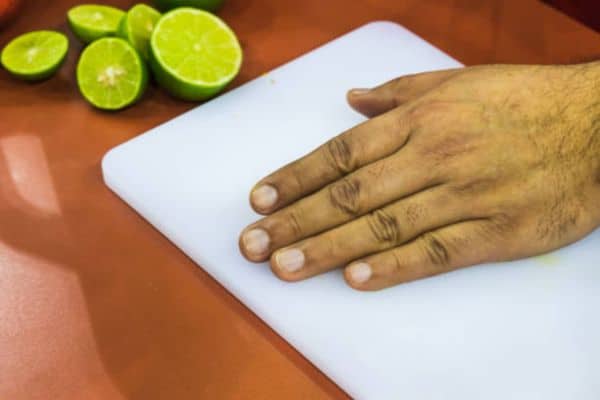
Sunlight is a natural disinfectant. Once the board is clean, let it air dry by a sunny window or outside. This not only dries the board—it also brightens it.
At this point, your board should look much better. It may not look brand-new, but it’ll be clean, fresh, and safe to use again.
Optional: Lemon Freshness
Sometimes I rub half a lemon over the board after cleaning. It gives a fresh scent and a little extra brightness. Plus, it just feels nice—like the final touch.
Tips to Keep Your Plastic Board Clean Longer
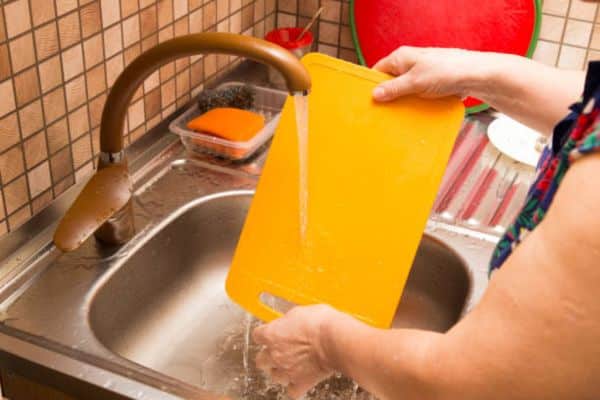
I’ve learned a few tricks over the years that help:
- Rinse immediately after use: The longer a stain sits, the deeper it sets.
- Keep a separate board for meat: This prevents cross-contamination and limits deep staining.
- Use dish soap with a degreaser: It helps cut through oily stains faster.
- Avoid using harsh bleach often: It can make the plastic brittle over time.
- Don’t microwave it: Heat warps plastic and opens up more grooves for stains.
Why I Still Use Plastic Cutting Boards
Wood looks lovely. Glass looks fancy. But plastic? It’s my go-to.
Here’s why: It’s light. It’s easy to clean. It’s cheap. And I can toss it in the dishwasher on busy days. I keep one for veggies and another for meat. They’re colour-coded so I don’t mix them up.
And because I now know how to clean them properly, I no longer hide them in shame.
Final Thought
Stained cutting boards used to frustrate me. Now, I just clean them like clockwork. It takes a few simple steps and some everyday items. Once you try it, you’ll never look back.
And rice? That used to scare me too. But once I understood the rhythm—rinse, measure, cover, wait—it became my comfort food. My go-to. My proof that even kitchen mistakes can turn into cozy traditions.
So here’s my invite to you—try cleaning that old plastic board today. Then maybe cook up some rice. Serve it with veggies, curry, or just a fried egg. Your kitchen doesn’t need to be perfect. It just needs to work for you.


